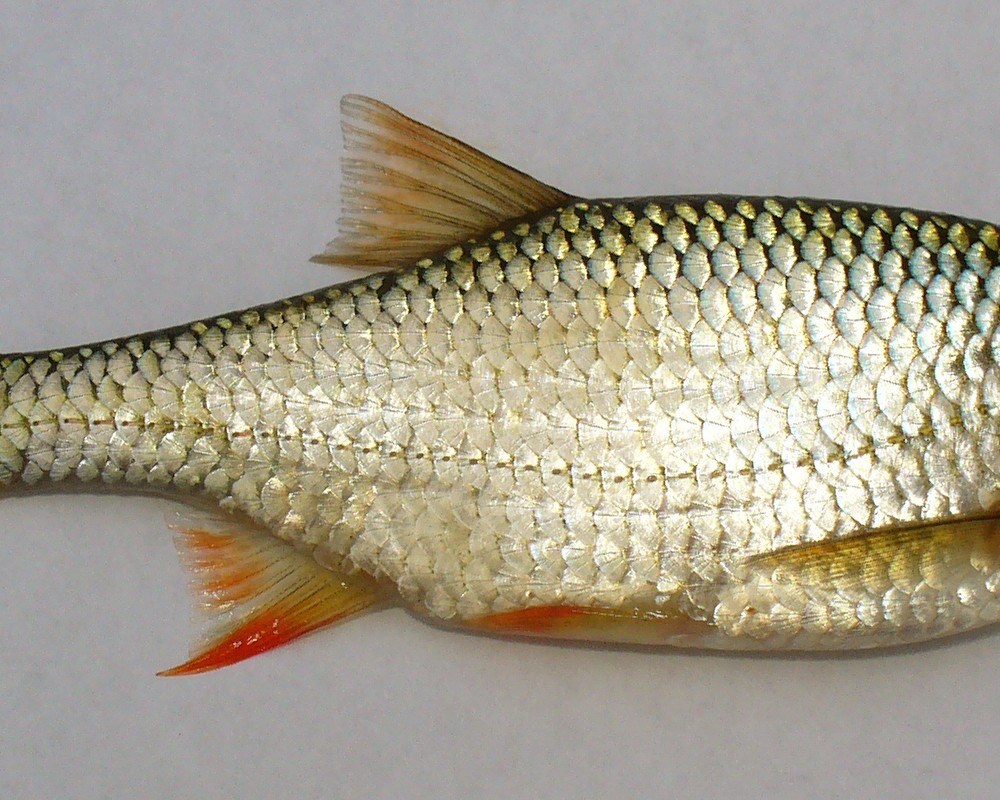Rudd
(Scardinius acarnanicus)

Description
The common rudd (Scardinius erythrophthalmus) is a bentho-pelagic freshwater fish, widely spread in Europe and middle Asia, around the basins of the North, Baltic, Black, Caspian and Aral seas. Morphologically, this species is very similar to the roach (Rutilus rutilus), with which it can be easily confused. It can be identified by the yellow eye colour. The eye of the roach has a big red spot above the pupil, that can be more or less conspicuous. The rudd has an upturned mouth allowing it to feed easily at the top of the water. The placement of the dorsal fin is more to the rear which is even visible in very young fish. There are normally only one or two scales between the tip of the pelvic fins and the anal fins, while on the roach there are five. Also the skin of the rudd is yellowish green, while the roach is bluish on the flanks. Also the upturned mouth is visible even in young fish. Furthermore, the rudd's number of soft rays in the dorsal fin (8–9 compared to 10–12). There can be confusion with the ide also, which has smaller scales however. There is a variety of the common rudd, popular among pond-keepers, known as the golden rudd, which has a gold-coloured body. The rudd can grow to a size of about 45–50 cm with an average of about 25 cm. The dorsal fin and pectoral fins are greyish with a reddish tint and all the other fins are bright red. This coloring of the fins is the feature to which the seventeenth century name ‘rudd’ refers. It has been artificially introduced to Ireland, United States, Morocco, Madagascar, Norway, Tunisia, New Zealand, Canada and Spain. Rudd have been found in the US states of Alabama, Arkansas, Colorado, Connecticut, Georgia, Illinois, Indiana, Kansas, Massachusetts, Maine, Missouri, Nebraska, New Jersey, New York, Oklahoma, Pennsylvania, South Dakota, Texas, Vermont, Virginia, West Virginia, and Wisconsin. This list may not include all states containing an introduced population of rudd. Rudd were illegally introduced into New Zealand in the 1960s and have been actively spread around the country. They have the potential to irreversibly damage indigenous ecosystems.
Taxonomic tree:







